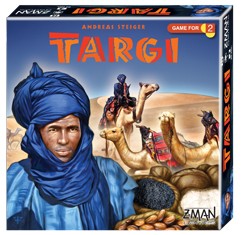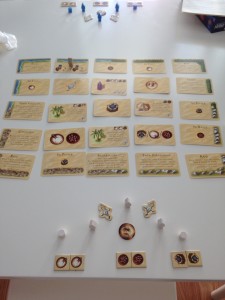I’ve got two posts up for Insiders, one on Boston signing Hanley Ramirez and an omnibus post covering four moves, two each by Oakland and the White Sox.
The Galaxy Trucker iPad app takes a well-reviewed boardgame (which I’ve never played) and turns it into something more on a tablet, with a “campaign mode” that plays like an adventure or role-playing game layered on the mechanics of the boardgame itself. It’s the most addictive game I’ve played all year, probably too much so – although I had a little spare time this weekend to try it out.
In Galaxy Trucker, you’re a long-haul space trucker who has to build a new ship for each run, preparing it to dodge meteors and stardust, battle space pirates and slavers, and pick up cargo from planets and abandoned ships for sale at your destination. Those various goals and obstacles require you to build a ship that has the right balance of cabins for crew, guns, engines, shields, batteries, and storage for goods … and that’s before you unlock the ability to carry certain aliens as extra crew too. Each component has connectors on one to four sides, so you have to make everything fit together on your ship while trying not to leave connectors exposed to stardust or vulnerable to meteor fire. And building those ships means competing in real-time against AI players to grab tiles from a central pile available to everyone; once the first player completes his/her ship, a timer starts and other players must finish as quickly as they can.
Out in space, the ships all appear on a track, starting in the order in which the players finished building. The journey to the next satellite or moon involves a set of eight to twenty “adventure cards,” overturned in order, each revealing a specific event. The easiest one is open space, where you can go as many spots forward as your engine allows, although position is only relative to the other ships rather than letting you speed to the destination – that is, you have to play all the cards before you dock.
Being first in line gives you first crack at any abandoned ships (where you can send crew members for money or cargo, at a cost of a couple of spaces on the track) or planets (so you can grab the most valuable cargo), but also puts you first in line to face pirates or slavers, who can damage your ship or steal your crew/cargo if you don’t have enough firepower. Meteors hit everyone in line, with smaller ones damaging tiles with exposed connectors but larger ones destroying whatever they hit if you can’t shoot them down. Combat is the one time you’re pitted against your rivals, because all ships are compared using three criteria – firepower, engine strength, and crew size – with the trucker scoring the lowest in each subject to attack, loss of crew, loss of cargo, or other penalties.
When building your ship, you do get to peek at some of the cards (I think 3/4 of them) if you don’t mind taking a brief break from the tile rush, so you can plan accordingly – such as adding weapons facing a specific side of the ship if you know you’ll face large meteors from that direction. That said, the variety of cards in all of the journey’s you’ll undertake means you’re always trying to balance the various components to survive the trip and make as much money as you can through salvage, rewards for finishing first or having the best-designed ship, or completing certain missions in the campaign.
That campaign is easily the best part of the app – it’s a little bit of a choose-your-own-adventure feel, except that you can’t die on page 63, you just go back to port and try again. The challenges increase in difficulty slowly at first, but near the end of the campaign there are two extremely tough ones (so far) that I’ve struggled to get past. The game also gives you a few broader goals to achieve outside of individual missions, and you get to keep expanding areas on your map to see more destinations and potentially earn more money from larger jobs. That “one more challenge” setup kept drawing me back to the game beyond the point when I might have been bored from crushing the AI after getting the hang of the game.
The one flaw in the implementation is the ease with which you can make an unintended move, which is irrevocable under the rules of the game. Dragging tiles down over your ship to reveal them, then dragging them back to the pile, all while trying to move as quickly as possible will result in some tiles accidentally dropped into place on your ship – and if you don’t notice that that happened and reach for another tile, you’ll be stuck with a piece you didn’t want and/or somewhere you didn’t want it.
The graphics are goofy but easy to understand, drawn from the board game for a cartoonish feel; the app itself ran smoothly over a dozen times. (Okay, maybe way over a dozen times.) The puzzle-solving aspect of Galaxy Trucker was the initial appeal, but the campaign mode is what makes it a must-purchase for boardgame fans. I’ve already gotten way more than $7.99 worth out of the game in, well, about five days of playing it.





